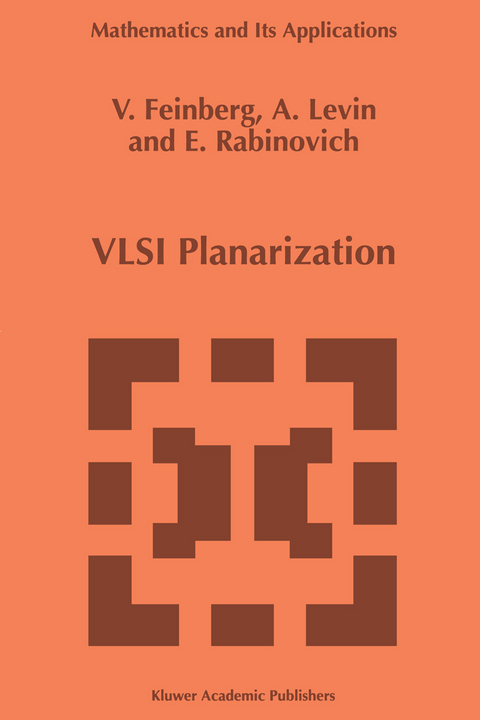
VLSI Planarization
Springer (Verlag)
978-0-7923-4510-7 (ISBN)
1 Discrete Mathematics Fundamentals.- 1.1 Graphs And Hypergraphs.- 1.2 Algorithms And Their Complexity.- 1.3 Algorithms In Graphs.- 1.4 Intractable Problems.- 2 Graph Planarization.- 2.1 Planar Graphs. Graph Planarity Criteria.- 2.2 Graph Planarity Testing Algorithms.- 2.3 Approximation Algorithm for Graph Planarization.- 3 Hypergraph Planarization.- 3.1 The Concept of Planar Hypergraph.- 3.2 Planarity of Different Hypergraph Classes.- 3.3 Hypergraph Nonplanarity Measures. Statement of Hypergraph Planarization Problem.- 3.4 Decomposition Methods of Hypergraph Planarization.- 4 Mathematical Models for VLSI Planarization Problem.- 4.1 Graph versus Hypergraph VLSI Models.- 4.2 VLSI Models with Specified Element Models.- 4.3 Dynamic VLSI Models.- 5 Extracting a Maximum Planar VLSI Part.- 5.1 Extracting a Maximum Planar VLSI Part as a Hypergraph Planarization Problem.- 5.2 Iteration Algorithm for Hypergraph Planarization.- 5.3 Hypergraph Planarization by Konig Representation.- 5.4 Operations of Local Embedding Optimization.- 6 Constructing Nonplanar Connections.- 6.1 Graph Model for Nonplanar Connections.- 6.2 Constructing a Nonplanar Connection as a Steiner Problem in a Weighted Graph.- 6.3 Ordering Nonplanar Connections to be Constructed.- 7 Planarization System Structure.- 7.1 Purpose and Functions of the System.- 7.2 Planarization System Structure. Logic Diagram.- 7.3 Data Organization in Planarization System.- 7.4 Some Aspects of the Practical Use of the Planarization System.- References.
| Erscheint lt. Verlag | 30.4.1997 |
|---|---|
| Reihe/Serie | Mathematics and Its Applications ; 399 | Mathematics and Its Applications ; 399 |
| Zusatzinfo | VI, 186 p. |
| Verlagsort | Dordrecht |
| Sprache | englisch |
| Maße | 155 x 235 mm |
| Themenwelt | Mathematik / Informatik ► Informatik ► Theorie / Studium |
| Technik ► Elektrotechnik / Energietechnik | |
| ISBN-10 | 0-7923-4510-X / 079234510X |
| ISBN-13 | 978-0-7923-4510-7 / 9780792345107 |
| Zustand | Neuware |
| Informationen gemäß Produktsicherheitsverordnung (GPSR) | |
| Haben Sie eine Frage zum Produkt? |
aus dem Bereich


